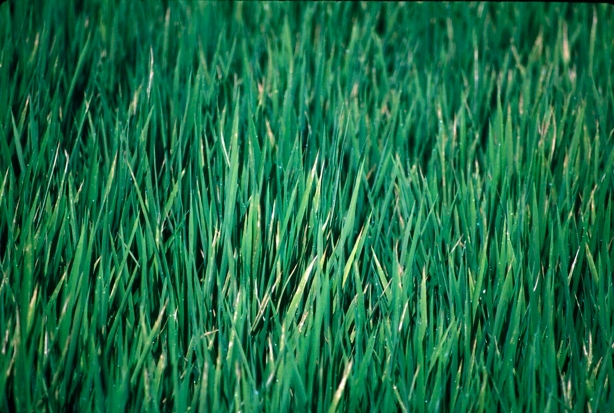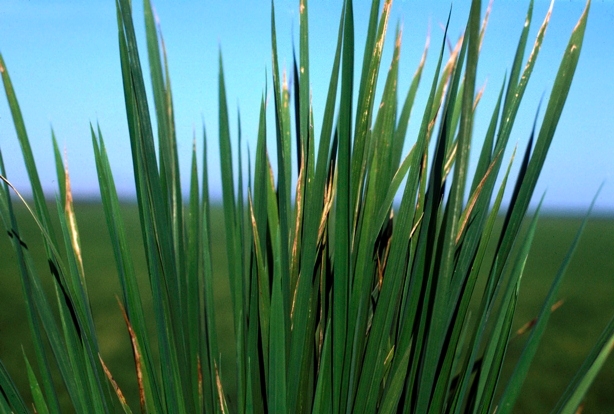In past newsletters and extension meetings the topics of N and P fertility have been covered recurrently. This year, Bruce Linquist, UC Davis Research Scientist, will begin a project to evaluate the status of K in rice soils in several locations across the Valley. His results will help explain occurrences of K deficiency. In the meantime, here is some basic information about K in rice systems.
Potassium in soil and plants
In the soil, K originates from slowly weathering minerals. In the soil solution, K is present as K ion (K+), the form used by plants. In rice plants, K participates in many enzymatic and physiological processes; notably in the opening and closing of stomata (leaf openings responsible for gas exchange). In general, K increases tillering, grain size and weigh, and disease resistance. In rice plants about 75% of plant K remains in leaves and stems, and the rest is translocated to grains.
Diagnosing potassium deficiency
In general, plant symptoms of K deficiency are observed after panicle initiation (PI) or as late as heading. From afar, the field has a reddish, burned appearance. When inspected closely, older leaf tips look chlorotic and burned, leaf blades show small brown spots that coalesce to form irregular necrotic areas. Potassium is very mobile within the plant; therefore, deficiency symptoms are observed fist in older leaves (when deficient, K is transported from older leaves to growing points where it is needed).
Soil and plant samples can be used to confirm K deficiency (Table 1). When using soil samples, make sure the ammonium acetate (NH4OAc) method is used since this method has been calibrated for California soils. When using plant tissue, sample the Y leave (the most recent fully expanded leaf).
If K fertilizer is needed, pre-plant applications are the most effective. Topdressing at mid-tillering is also possible; however, applications at this time are not as effective as pre-plant applications. Late K applications (after PI) may not affect yield but can reduce symptoms and help increase overall plant vigor.
Pre-plant K can be surfaced applied—K does not volatilize, like N, and it does not increase algae problems, like P. However, if a blend including N and P is used, the material should be incorporated to avoid the previously mentioned problems. The K rate needed will vary depending on soil characteristics and the intensity of deficiency. Growers should experiment using different rates to see which gives the best results.

Potassium deficiency in rice field. Photo by J. Williams.
Plants showing K deficiency symptoms. Photo by J. Williams.
Straw management and potassium
An 8,000 lbs rice crop extracts 174 lbs of K per acre, 26 lbs on the grain and 148 lbs on the straw. When incorporating or burning the straw, all of the straw K returns to the soil. However, when burning, the distribution of the K might not be uniform because of movement of the remaining ash due to wind and rains.
If baling during the fall, approximately 34 lbs of K are removed per ton of baled straw. When baling occurs during the spring, much less K is removed because a large proportion of the K in the straw leaches from the plants with winter rains. Baling has the potential of mining K out of the soil relatively quickly. Experiments in California have shown that after three seasons of baling, the amount of extractable K in the top soil can be reduced below critical levels.
While baling increases the probability of seeing K deficiency in a relatively short period of time, many years of rice production and grain-K extraction without resupplying the soil can lead to K deficiency in a longer time frame. This might explain why growers experience K deficiency problems in soils that were considered high in K in the past.
Table 1. Critical levels of K in the soil and plant tissues.
|
Phase/Growth stage |
Critical value for deficiency |
Notes |
|
K in soil |
Ammonium acetate extraction method |
|
|
K in plant—mid tillering |
<1.4% |
Y leave content |
|
K in plant—PI |
<1.0% |
|
|
K in plant—flag leaf |
<1.0% |